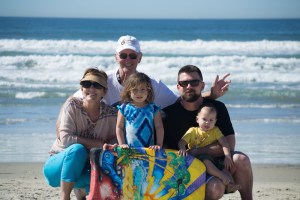Being one of the most historical photographs taken on August 14th, 1945, “The Kiss” was an instant American favorite. On Victory Over Japan Day (V-J Day) in Times Square, New York City, thousands gathered to celebrate the long awaited Allied victory of the second World War. Alfred Eisenstaedt took the photograph with a Leica IIIa camera. It would appear in Life magazine in the August 27th, 1945 issue along with various photographs depicting the celebrations that took place in Times Square that August day. I acquired the image via screen shot (portable network graphics image, 204 KB) of “The Best of Life: 37 Years in Pictures” on the Time website. The image appears to be slightly pixelated due to the time period and the quality of the camera. Nevertheless, I think that the faults in the quality contribute to the character of the photograph. My search criteria included, “Iconic images of the 20th century”. Rightfully so, it is apparent that this photo holds much meaning for Americans. I chose this photograph because it resembles a moment following years of destruction and remorse. A moment wherein all weight was lifted off the shoulders of Americans across the country. Seldom do we experience these moments where absolutely nothing in the world matters except for the moment at hand. Apparently George Mendonsa, the sailor in the photograph, was experiencing the same type of euphoria. After further investigation into the story behind the photo, George was on his first date with his future wife, Rita, the day this picture was taken. However, Rita was not the woman in the white dress he was kissing. While watching a film with Rita at Radio City Music Hall, the showing was halted after someone barged in announcing the surrender of the Japanese. Everyone fled the theater and filled the streets while bartenders had lined up mugs all along the bars and kept pouring. George recalls going to Child’s Bar just down the street. They then made their way to Time Square where George saw a group of nurses. He then had a flashback to his duties in the Pacific when two Kamikaze pilots crashed into a neighboring naval ship. Afterword’s he watched various nurses’ work on hundreds of injured men. He spontaneously ran from Rita, grabbed the first nurse he saw, dipped her and kissed her. Rita does not resent the kiss till this day. George says he was so drunk he does not even remember the kiss. Greta Zimmer, the woman in the white dress, however, was not in fact a nurse. She was a dental assistant from Queens who made her way over to Times Square after the news of the surrender. Greta was actually born and raised in Austria, and was one of the last refugees to flee to America. Both of her parents died in concentration camps. After learning about the authenticity of this photograph, it has changed the way I interpreted its meaning. As many Americans would initially assume, I felt it resembled a celebration of a long awaited reunion between a soldier and his love. With the authentic history now at hand, I look at this picture as collaboration between countries. An American soldier, protectively taking into his arms an Austrian runaway. Whether it is fate or chance, I stand flabbergasted regarding the identities of the two pictured. Without the alliance of countries across the globe, the celebration that took place on August 14th, 1945 may have just been another day on the busy streets of New York. I chose this image because it was stood out to me since the first time I moved to San Diego. I visited the USS Midway on Harbor Drive where I saw a rendition of Seward Johnson’s “Unconditional Surrender” statue, resembling the iconic kiss. It has always been one of my favorite locations in San Diego. Even though my meaning of the statue has changed, I feel as if I gained an even greater appreciation for “the kiss that ended the war”.
JT





